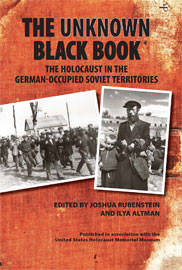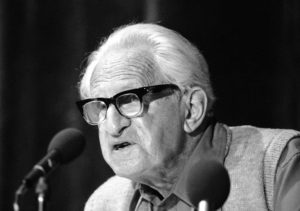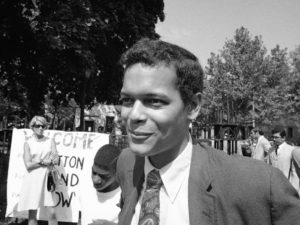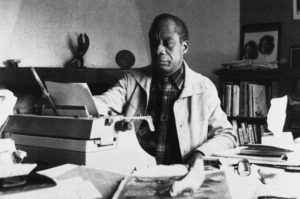Timothy Snyder on the Forgotten Holocaust
One of the great crimes of the 20th century -- the mass murder of Jews in the Nazi-occupied Soviet territories -- is all but forgotten. "The Unknown Black Book" helps us remember.
“I felt a strong desire to sprinkle my head, my whole self, with ashes, to be nothing, to be changed into dust.” — Ida Belozovskaya, quoted in “The Unknown Black Book”
Though she survived the Holocaust, Ida Belozovskaya was not invoking the crematoriums of Auschwitz. In the Kiev of September 1941 that she was describing in one of the interviews published in “The Unknown Black Book,” the Germans were killing the Jews, but without the help of gas chambers. These had not yet been invented, but the Holocaust was under way. What she was trying to describe was the fear and shame of hiding in a city where 30,000 Jews could be shot in a single day, where her father had just been seized on the street. Her references jar the ones we have come to know, but her experience is just as representative, and important, as that of Jews who lived through Auschwitz. Half of the Jews who died in the Holocaust were killed by bullets rather than by gas, in death pits rather than in death camps. Some 2.2 million Soviet Jews were killed by shooting; 350,000 more were asphyxiated in mobile gas vans. Compare this to the 1.1 million deaths at Auschwitz, or the approximately 800,000 deaths at Treblinka. Even had the death camps never existed, this eastern Holocaust would have to be regarded as the most horrible of atrocities. Yet we have all but forgotten it.
The Unknown Black Book
Edited by Joshua Rubenstein and Ilya Altman
Indiana University Press, 446 pages
The east is where the killing began. The mass murder of Europe’s Jews began not in Germany or in German-occupied Poland, but on the eastern front, after the German invasion of the Soviet Union in June 1941. As the German army swept forward in 1941 and 1942, four Einsatzgruppen (“Task Forces”) followed them to the east, assigned to liquidate political enemies and Jews. At the end of August, the Germans killed some 23,000 Jews in the Ukrainian city of Kamenets-Podolsk. After that the total elimination of Jewish populations in Ukraine and Belarus became the norm. The murderous work of the Einsatzgruppen combined an ideological and a racial purpose. In the Nazi worldview, Jews were racial inferiors and enemies, doomed to disappear from Europe. Yet in this paradigm Jews were also communists, and thus, as Yitzhak Arad notes in his introduction to “The Unknown Black Book,” the murder of Soviet Jews was regarded as a method of defeating communism. Adolf Hitler’s men in Minsk made the connection clear, carrying out mass killings on the anniversary of the October Revolution, on Red Army Day and then on International Women’s Day.
It was also in the east that Jews resisted. After the Red Army withdrew from Soviet Belarus and Soviet Ukraine, Josef Stalin endorsed partisan warfare. Communist partisans in Belarus and Ukraine were more important to the outcome of the war than the more celebrated resistance movements in the west. In Belarus in particular, but also in Ukraine, partisans often sheltered Jews who were escaping the ghetto and sometimes armed them. According to one of the accounts collected in “The Unknown Black Book,” Jews in the Minsk ghetto dug a 200-meter-long tunnel that began under a bakery stove, and hundreds of Minsk Jews used it to join the partisans to fight the Germans. According to the editors, perhaps 30,000 of the 350,000 or so partisans in Soviet Belarus were Jews. Not surprisingly, they were after revenge.
Soviet Jewish writers such as Vasily Grossman and Ilya Ehrenburg learned of the atrocities in Soviet Belarus and Soviet Ukraine soon after they took place. For a time, it was their job to document Nazi atrocities against Jews and spread knowledge of Jewish suffering. In February 1942, Stalin formed the Jewish Anti-Fascist Committee, appointing Jewish intellectuals such as Grossman and Ehrenburg as international ambassadors of Soviet Jews. Their press campaigns and tours abroad were designed to raise money and improve the image of the Soviet Union. It was one of several such committees; Stalin did not mean to pay any special attention to the Jews. Yet because the Jews were in fact Hitler’s special target, members of the Jewish Anti-Fascist Committee were forced to confront the particular horror of the Final Solution. After the Red Army halted the Germans in western Russia in early 1943, these intellectuals followed Soviet troops to the west, recording the atrocities that had been perpetrated by the Einsatzgruppen over the previous two years. They collected letters and essays from people who had survived by digging their way, wounded, out of death pits.
The documents published in English translation in “The Unknown Black Book” are among those collected and edited by members of the Jewish Anti-Fascist Committee, with the aim of publishing a catalog of German war crimes. During the war, committee members were in contact with American Jews, and the publication was to be a joint American-Soviet undertaking, with English and Russian editions. An English version did appear, but the publication of the Russian-language “Black Book” was suddenly halted in 1947. Then the Jewish Anti-Fascist Committee was dissolved, and its members persecuted. Thirteen of them had been killed by 1952. The publication of the Russian-language “Black Book” had to await the collapse of the Soviet Union. The Russian edition of this second and equally valuable collection of documents, “The Unknown Black Book,” appeared at the same time, in 1993. The particular historical merit of these collections is that they assemble records collected in the months following the events they describe. The two books together provide one of the most important sources on the Holocaust, and the editors and Indiana University Press have performed an invaluable service by preparing an English-language edition of “The Unknown Black Book.”
Why was recording the Holocaust such a problem in the postwar Soviet Union? Stalin had led the peoples of the Soviet Union to victory, but not before allowing millions and millions of Soviet citizens to die at German hands. For the Soviet system to survive, the meaning of all of the suffering had to be the triumph of the united Soviet peoples over a terrible and relentless enemy. For this to work as propaganda, all citizens had to have suffered equally, and to have resisted the Germans with equal fervor. Yet, as the accounts collected in “The Unknown Black Book” recall, the Holocaust stands out even among the countless other German war crimes in the east, and the Germans could never have done their bloody work without local collaboration. The Einsatzgruppen numbered only about 3,000 men. To be sure, they were aided by German police and by the German army. But they needed local police forces to make and then to clear ghettos. The Soviet system punished collaborators, of course, but it could not tolerate the reality of systematic collaboration. No less than France or any other occupied country, the Soviet Union needed a myth of unified resistance. As Stalin edited the myth, he gave the Russians a central role. They were the nation that was more equal than the others. The war was fought under the banner of Russian nationalism, and presented by Stalin in a famous toast as a Russian victory. But the war was not, for the most part, fought in Russia; most Russians never saw a German. While no one would wish to forget the horrible siege of Leningrad, Soviet Ukrainians and Soviet Belarusians bore the brunt of the fighting, Ukrainians and Belarusians suffered far more than Russians, and Jews suffered more than anyone else. This was precisely, in a typically Stalinist irony, what made the Russian nation great. Russia was, as Stalin saw matters, less contaminated. People who had remained in Belarus and Ukraine under German occupation were suspect. They had had contact with another system. People who had been taken prisoner and held in camps were still more suspect. They had left the Soviet universe. All of them, and the millions of returning soldiers and forced laborers, were tainted by their contact with the world beyond the USSR. In this light, the persecution of the Anti-Fascist Committee hardly seems surprising.
In their discussions of the fate of the Jewish Anti-Fascist Committee and the documents it collected, the editors of “The Unknown Black Book” explore some of these issues but disregard larger problems of international politics that made up part of the context. For Stalin the Jewish question was a national question, and every national question was an international question. If a national question could be exploited in international politics, that was all well and good. It was perfectly legitimate to encourage national revolts against British or later American imperialism. It was also perfectly legitimate to support the Zionist dream of an independent state of Israel, as Stalin in fact did. The Soviets expected Israel to be a loyal ally of Moscow. When it did not prove to be such, Stalin had a reason, from his perspective, to persecute Jews. If they were not with him, they were against him. So ended the history of the Jewish Anti-Fascist Committee, and so might have ended the chronicle of its work. The English publication of “The Unknown Black Book” is the latest important step in the recreation of its intellectual legacy, one of serious and irreplaceable research on the Final Solution.
The evidence of “The Unknown Black Book” can be discomfiting to Western readers. It recalls that the center of Jewish life in Europe, and indeed in the world, was in Ukraine, Belarus and Poland. The Netherlands of Anne Frank, the Italy of Primo Levi and even the Germany of Victor Klemperer were the margins of Jewish life, not the center. It also forces us to insert a new event into our habitual account of the Holocaust. Jews were put in ghettos in Poland before the invasion of the Soviet Union, but they were not murdered in large numbers until thereafter. Hitler was planning some kind of Final Solution throughout the war, but until 1941 this meant exile rather than murder. It can be uncomfortable to be reminded that the German decision to kill all the Jews of Europe was taken quite late, in summer or autumn 1941, and that this decision was taken in a certain context. That this context was the German invasion of the Soviet Union also introduces a certain awkwardness. Hitler connected the Jews to Soviet power, and therefore some students of modern Jewish history, particularly in the United States, treat the issue of Jewish communists as taboo. This would have made no sense to the survivors whose memories are recorded in this volume, many of whom saw themselves precisely as both communists and Jews.
The eastern Holocaust of death pits leads us inevitably to questions of the comparison of totalitarian regimes. The comparison of Nazi and Soviet power, a matter of theoretical interest in the West, was a practical exercise in eastern Europe. East Europeans, including Soviet Jews, experienced rule by both, and had to make their choices. The grim complexity of the eastern front deprives us of an easy sense of heroism and victimhood. Jewish communist partisans in Belarus or Ukraine obviously seem heroic as enemies of the Nazis and avengers of their families. Their legacy is muddled by the fact that they bore arms to defend a system that had killed 3.5 million Ukrainians and a similar number of Kazakhs by famine 10 years before, and a million other Soviet citizens by execution in 1937-1938. It is confused still more by the fact that the Soviet Union began the Second World War as a de facto ally of Hitler, joining in the invasion and then the plunder of Poland in 1939-1941. In summer 1941, Soviet Jews had not known what to expect from the Germans, because the Soviet press had not been reporting German anti-Semitic policies. All of that said, it is perfectly clear why Jews in Soviet Belarus and Soviet Ukraine would join the partisans, and it is surely best to understand their immediate motives rather than to shy away from the issue for fear of violating a taboo by associating Jews and communism.
In a strange way, comprehending the western Holocaust taxes us less than considering the eastern Holocaust. In 60 years of debates about origins and methods of the Final Solution, we have brought the Enlightenment into service against itself, explaining German crimes as a kind of paradox of modernity. The tools of modern technology, goes a common view, the trains and the gas, allow for mass killing at a distance. The alienation of modern society means that people might not know or care what happened to neighbors who disappeared in the middle of the night. The tools of modern bureaucracy allow responsibility to be divided into such small pieces that it is impossible to assign it to individuals. In Hannah Arendt’s famous formulation, complexity makes evil banal. Yet in the Soviet east, little of this seems pertinent. There the Einsatzgruppen killed by following simple orders from above, drawing Jews to ghettoes and death pits by brute violence and simple ruses, ending their lives by the simple expedient of bullets, in places where neighbors could hear the gunshots. The most complicated part, sometimes neglected, was remembering to dig the trench beforehand.
The Germans knew what they were doing, and still they did it. The Jews knew what was coming, and still they died. Bystanders knew what would befall their neighbors, and rarely helped. The events described in “The Unknown Black Book,” half of the Holocaust, remove our covering stories and leave the truth bare. Evil is banal, but not because it is complex. Evil is banal because it is so simple.
Timothy Snyder is professor of history at Yale University. He has recently completed “The Red Prince: The Secret Lives of a Habsburg Archduke” (Basic Books, 2008). He is currently at work on “Bloodlands: Eastern Europe Between Hitler and Stalin, 1933-1953.”
Your support matters…Independent journalism is under threat and overshadowed by heavily funded mainstream media.
You can help level the playing field. Become a member.
Your tax-deductible contribution keeps us digging beneath the headlines to give you thought-provoking, investigative reporting and analysis that unearths what's really happening- without compromise.
Give today to support our courageous, independent journalists.









You need to be a supporter to comment.
There are currently no responses to this article.
Be the first to respond.